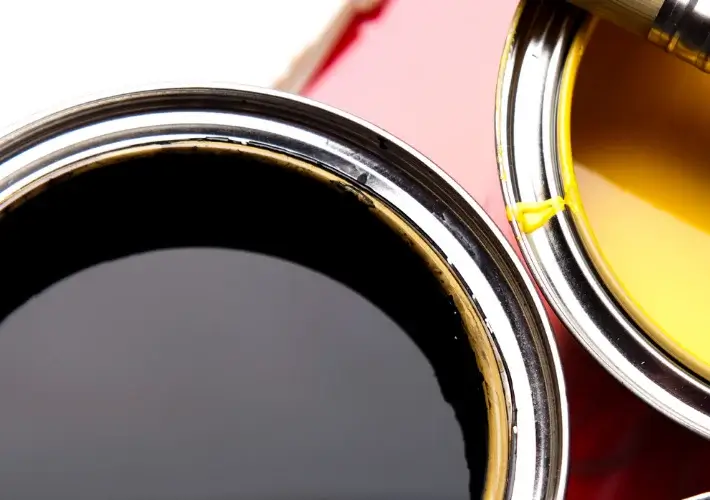# Why Your Soccer Ball Loses Air Quickly – Causes and Fixes
**Meta Description:** "Is your soccer ball deflating too fast? Discover the causes of air loss and proven fixes in this expert guide by SoccerBallClub."
## Introduction
There’s nothing more frustrating than pumping your soccer ball one day and finding it flat the next. Whether you’re a weekend warrior or a daily trainer, **a soccer ball that won’t hold air ruins your game**.
At **SoccerBallClub.net**, we take air retention seriously. That’s why we’ve created this guide to help you identify why your soccer ball loses air quickly — and how to fix it.
---
## Common Causes of Soccer Ball Air Loss
### 1. **Punctures or Leaks in the Outer Cover**
Even a tiny tear in the PU or TPU layer can cause gradual air escape.
**Signs:**
* You hear a faint hiss after inflation
* Air leaks around a specific spot
✅ **Fix:** Locate the puncture using soapy water. If bubbles form, patch with a soccer ball repair kit or use super glue for small holes.
---
### 2. **Damaged Valve Stem**
The valve is where you insert the pump needle — and it’s also a weak spot.
**Damage Causes:**
* Forcing in the pump needle
* Moisture or debris inside the valve
* Manufacturing defects
✅ **Fix:**
* Clean the valve gently using a damp cotton swab
* Use **valve oil** or silicone lubricant to seal minor gaps
* If broken, valve replacement is tricky — consider replacing the ball if it’s old
---
### 3. **Low-Quality or Worn-Out Bladder**
The bladder holds the air inside the ball. There are two main types:
* **Butyl bladder:** Excellent air retention (used in training balls)
* **Latex bladder:** Softer touch but needs frequent inflation (used in match balls)
✅ If your ball has a **latex bladder**, some air loss is normal every 1–2 weeks.
---
### 4. **Extreme Temperature Changes**
Cold weather compresses air; heat can expand it and stress the bladder.
**Tip:**
* Don’t leave your ball in a hot car or freezing garage overnight
* Always store it at **room temperature** for best air retention
---
## How to Detect a Slow Air Leak
Try the **Soap & Water Test**:
1. Mix dish soap with water in a bowl
2. Inflate the ball fully
3. Apply soapy water to the surface and valve using a sponge
4. Look for bubbles forming = air leak spot
This method works great for pinpointing small leaks.
---
## How Often Should You Inflate a Soccer Ball?
| Bladder Type | Inflation Frequency |
| ------------ | ------------------- |
| Butyl | Every 2–4 weeks |
| Latex | Every 5–10 days |
If you’re inflating a butyl ball every 2 days — something’s wrong.
✅ Our **Elite Grip Pro Training Ball** uses a high-retention butyl bladder: [View Product](
https://soccerballclub.net/training)
---
## How to Properly Inflate a Soccer Ball
Incorrect inflation causes both air loss and valve damage.
### Follow these steps:
1. Use a **needle pump**
2. Moisten the needle before insertion
3. Insert slowly at a straight angle
4. Inflate to **recommended PSI** (usually 8.5–15.6 PSI)
📏 Always check the pressure printed near the valve or packaging.
---
## When to Replace the Ball
Sometimes, it's better to retire the ball than repair it.
### Replace if:
* Valve is completely detached
* Bladder is punctured or leaking from multiple points
* Outer cover is separating from inner layers
✅ Visit our store for durable replacements: [SoccerBallClub Match Balls](
https://soccerballclub.net/match)
---
## How to Prevent Future Air Loss
### 1. Store Indoors
Extreme heat or cold damages the bladder and causes pressure changes.
### 2. Use the Right Surface
Avoid using match balls on:
* Asphalt
* Rough concrete
These surfaces damage the ball exterior.
### 3. Inflate Properly and Regularly
Maintain optimal pressure and don’t over-pump. Keep a **ball pressure gauge** handy.
### 4. Use Quality Balls
Cheap soccer balls are made with:
* Weak PVC outer layers
* Low-quality stitching
* Inferior bladder materials
✅ All SoccerBallClub balls use **premium PU or TPU covers**, and are tested for **air retention over 100 hours of play**.
---
## Recommended Balls with Superior Air Retention
### 🧪 Training Ball: [Elite Grip Pro](
https://soccerballclub.net/training)
* Butyl bladder, reinforced stitching, excellent for daily use
### 🎯 Match Ball: [Precision Flight Pro](
https://soccerballclub.net/match)
* Latex bladder, thermo-bonded, perfect for top-level games
---
## Final Thoughts
Air loss is annoying — but it’s also preventable. With proper care, high-quality materials, and a bit of know-how, your soccer ball should keep its shape and pressure for weeks at a time.
Still having issues? It might be time to upgrade.
⚽ Explore premium balls tested for air retention at [SoccerBallClub.net](
https://soccerballclub.net) and enjoy the game uninterrupted.
---
## Related Articles
* 🧪 [How to Care for Your Soccer Ball](
https://soccerballclub.net/ball-care-guide)
* 🧵 [Bladder Types: Butyl vs Latex Explained](
https://soccerballclub.net/bladder-comparison)
* ⚠️ [Top 5 Mistakes When Buying a Soccer Ball](
https://soccerballclub.net/buying-mistakes)
# Why Your Soccer Ball Loses Air Quickly – Causes and Fixes
**Meta Description:** "Is your soccer ball deflating too fast? Discover the causes of air loss and proven fixes in this expert guide by SoccerBallClub."
## Introduction
There’s nothing more frustrating than pumping your soccer ball one day and finding it flat the next. Whether you’re a weekend warrior or a daily trainer, **a soccer ball that won’t hold air ruins your game**.
At **SoccerBallClub.net**, we take air retention seriously. That’s why we’ve created this guide to help you identify why your soccer ball loses air quickly — and how to fix it.
---
## Common Causes of Soccer Ball Air Loss
### 1. **Punctures or Leaks in the Outer Cover**
Even a tiny tear in the PU or TPU layer can cause gradual air escape.
**Signs:**
* You hear a faint hiss after inflation
* Air leaks around a specific spot
✅ **Fix:** Locate the puncture using soapy water. If bubbles form, patch with a soccer ball repair kit or use super glue for small holes.
---
### 2. **Damaged Valve Stem**
The valve is where you insert the pump needle — and it’s also a weak spot.
**Damage Causes:**
* Forcing in the pump needle
* Moisture or debris inside the valve
* Manufacturing defects
✅ **Fix:**
* Clean the valve gently using a damp cotton swab
* Use **valve oil** or silicone lubricant to seal minor gaps
* If broken, valve replacement is tricky — consider replacing the ball if it’s old
---
### 3. **Low-Quality or Worn-Out Bladder**
The bladder holds the air inside the ball. There are two main types:
* **Butyl bladder:** Excellent air retention (used in training balls)
* **Latex bladder:** Softer touch but needs frequent inflation (used in match balls)
✅ If your ball has a **latex bladder**, some air loss is normal every 1–2 weeks.
---
### 4. **Extreme Temperature Changes**
Cold weather compresses air; heat can expand it and stress the bladder.
**Tip:**
* Don’t leave your ball in a hot car or freezing garage overnight
* Always store it at **room temperature** for best air retention
---
## How to Detect a Slow Air Leak
Try the **Soap & Water Test**:
1. Mix dish soap with water in a bowl
2. Inflate the ball fully
3. Apply soapy water to the surface and valve using a sponge
4. Look for bubbles forming = air leak spot
This method works great for pinpointing small leaks.
---
## How Often Should You Inflate a Soccer Ball?
| Bladder Type | Inflation Frequency |
| ------------ | ------------------- |
| Butyl | Every 2–4 weeks |
| Latex | Every 5–10 days |
If you’re inflating a butyl ball every 2 days — something’s wrong.
✅ Our **Elite Grip Pro Training Ball** uses a high-retention butyl bladder: [View Product](https://soccerballclub.net/training)
---
## How to Properly Inflate a Soccer Ball
Incorrect inflation causes both air loss and valve damage.
### Follow these steps:
1. Use a **needle pump**
2. Moisten the needle before insertion
3. Insert slowly at a straight angle
4. Inflate to **recommended PSI** (usually 8.5–15.6 PSI)
📏 Always check the pressure printed near the valve or packaging.
---
## When to Replace the Ball
Sometimes, it's better to retire the ball than repair it.
### Replace if:
* Valve is completely detached
* Bladder is punctured or leaking from multiple points
* Outer cover is separating from inner layers
✅ Visit our store for durable replacements: [SoccerBallClub Match Balls](https://soccerballclub.net/match)
---
## How to Prevent Future Air Loss
### 1. Store Indoors
Extreme heat or cold damages the bladder and causes pressure changes.
### 2. Use the Right Surface
Avoid using match balls on:
* Asphalt
* Rough concrete
These surfaces damage the ball exterior.
### 3. Inflate Properly and Regularly
Maintain optimal pressure and don’t over-pump. Keep a **ball pressure gauge** handy.
### 4. Use Quality Balls
Cheap soccer balls are made with:
* Weak PVC outer layers
* Low-quality stitching
* Inferior bladder materials
✅ All SoccerBallClub balls use **premium PU or TPU covers**, and are tested for **air retention over 100 hours of play**.
---
## Recommended Balls with Superior Air Retention
### 🧪 Training Ball: [Elite Grip Pro](https://soccerballclub.net/training)
* Butyl bladder, reinforced stitching, excellent for daily use
### 🎯 Match Ball: [Precision Flight Pro](https://soccerballclub.net/match)
* Latex bladder, thermo-bonded, perfect for top-level games
---
## Final Thoughts
Air loss is annoying — but it’s also preventable. With proper care, high-quality materials, and a bit of know-how, your soccer ball should keep its shape and pressure for weeks at a time.
Still having issues? It might be time to upgrade.
⚽ Explore premium balls tested for air retention at [SoccerBallClub.net](https://soccerballclub.net) and enjoy the game uninterrupted.
---
## Related Articles
* 🧪 [How to Care for Your Soccer Ball](https://soccerballclub.net/ball-care-guide)
* 🧵 [Bladder Types: Butyl vs Latex Explained](https://soccerballclub.net/bladder-comparison)
* ⚠️ [Top 5 Mistakes When Buying a Soccer Ball](https://soccerballclub.net/buying-mistakes)









